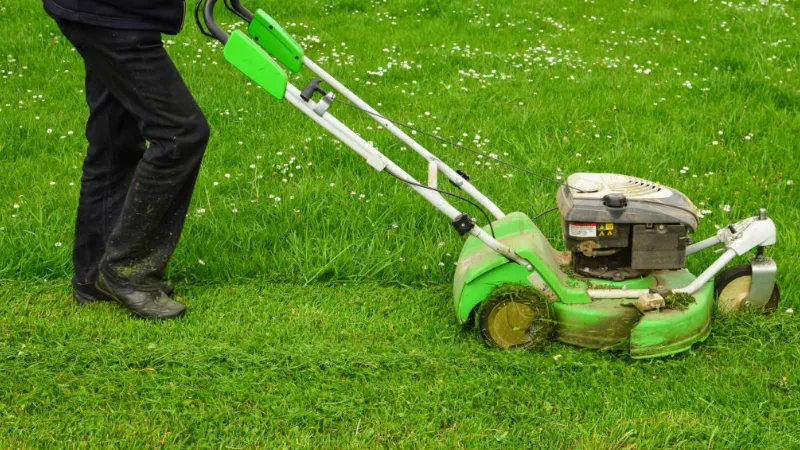You recently acquired a snake plant but are unsure of how to care for it. Your new plant shouldn’t die, at all costs! You wonder: how often should you water a snake plant?
You can water your snake plant every 2 to 3 days, especially during the summer days when they consume more water. However, space out the watering schedule every 2-4 weeks if they are indoors and receiving enough light.
Keep reading.
How Often Should You Water a Snake Plant?
As everyone is aware, a number of other variables, including the plant’s size, humidity, temperature, and weather, will also affect how often to water it.
During the winter, the temperatures will be cooler, and the plant’s sun exposure is reduced, which means that the soil will remain moist for a more extended period. We only water this plant once a month because of this. To stop the soil from completely drying out, you must take this action.
You can give your snake plant only a little water. Furthermore, since they don’t use as much water during the winter as they do during the summer, watering it once a month is appropriate. But of course it also depends on how chilly it is outside.
The plant’s active growing season will begin in the spring. While allowing the topsoil to completely dry out in between watering schedules, you can increase the watering schedule to one to two weeks.
It is bad for your snake plant’s health to overwater it, so avoid doing it. Make sure your snake plant doesn’t sit in water for an excessive amount of time because doing so could eventually turn it mushy and cause it to rot.
As they say, the snake plant is hardy, and its death is always caused by overwatering. I ought to know because improper water frequency caused me to kill a fair number of them.\
Checking the top two inches of the soil before watering is still the best practice. The ground must be brittle and dry.
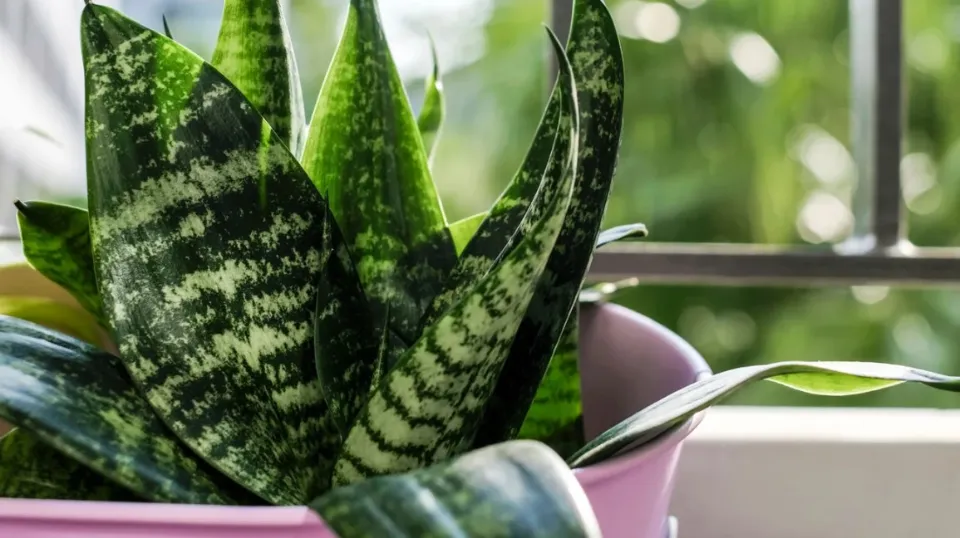
For Small Snake Plants: How Often Should You Water?
Snake plants that are smaller require less water. A 4-inch snake plant, for instance, only needs to be watered every two weeks. The amount of water may seem less than what you are used to, but it should only be watered when the soil is dry.
Repeat the above-mentioned watering advice. Water along the inside edges of the pot so the water does not build up near the plant’s base and leaves. Between waterings, allow the soil to completely dry out.
How Much Water Do Snake Plants Need?
The size of the plant, the size of your pot, and the climate all play a role in this.
Usually, a bigger plant requires more water. Additionally, if you live somewhere with dry heat, you might need to water them more frequently than someone who lives somewhere colder.
The general rule is to thoroughly water the plant until the top 2 inches of the soil are submerged. The soil should be evenly watered. Stay away from the roots when concentrating. I would suggest placing the water instead close to the inner edges of the pot. By doing this, you prevent the leaves and base from getting wet, which could cause them to rot.
Give the pot another round of water after letting the water drain through the drainage holes. For the next 20 minutes, let all of the extra water drain out. Wait until the soil is completely dry before beginning the next watering schedule.
Simply put, give your snake plant shallow, thorough waterings only occasionally. Let’s go over the other frequently asked questions regarding the water requirements for snake plants.
Top watering tips:
Scenarios That May Require More Hydration
Your plant may occasionally use more water than usual, in which case it will need to be watered a little more frequently. Remember that this is still quite minimal in comparison to other indoor plants.
- If the plant receives a fair amount of indirect sunlight and is actively growing
- If your snake plant variety originates from wetlands or swampy areas
- Your plant has a lot of foliage and is actively growing
- The home environment is dry due to low humidity or high temperatures
- If you notice that the plant’s leaves are growing thin
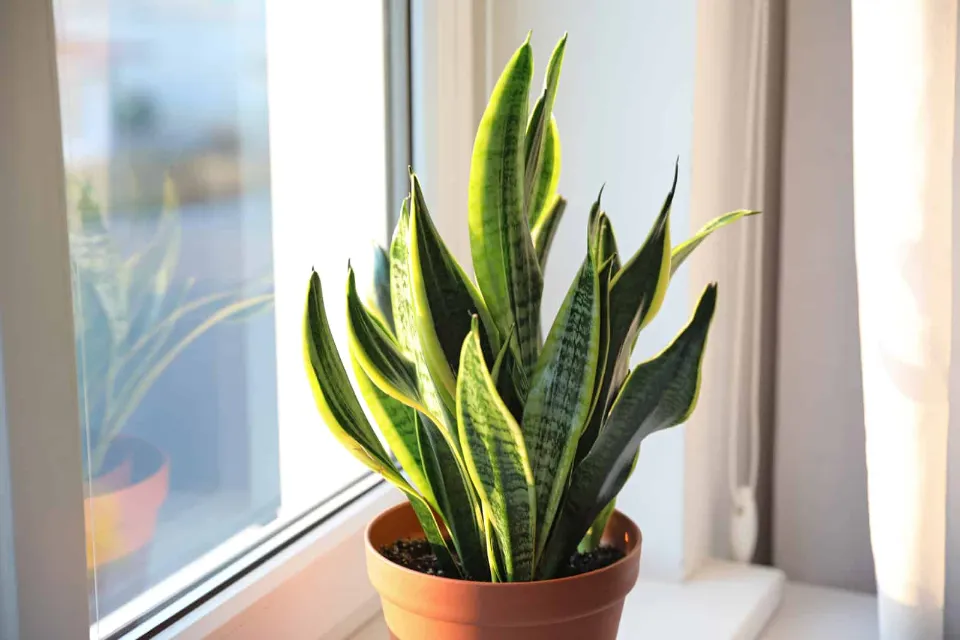
How to Tell If My Snake Plant Needs Water?
These five indications that your snake plant needs water are present.
- Leaves are brown
- Leaves are curling
- Leaves are wrinkly and brittle
- The top layer (2-3 inches) of soil is dry
- Slow growth
How Can I Tell If My Snake Plant is Overwatered?
Here are four indicators that your snake plant needs more water.
- Soft leaves
- Soil smells (an early indicator of root rot)
- Drooping leaves
- Yellow leaves
How Snake Plants Hold Water?
Knowing how snake plants use and store water is crucial before anything else. Snake plants are considered succulents because they store water in their thick, fleshy leaves. They are indigenous to regions of southern Asia and Africa where the weather is extreme. To withstand these conditions, snake plants also utilize a unique type of photosynthesis called Crassulacean Acid Metabolism (CAM) to prevent water loss during extreme daytime temperatures. Plants that utilize CAM photosynthesize regularly during the day, but only open their stomata to exchange gasses at night in an effort to prevent evapotranspiration1.
It goes without saying that snake plants are tough, drought-tolerant plants because of their ability to store water. In addition, they are more prone to overwatering and root rot than some other tropical plants. Ultimately though, the frequency with which snake plants should be watered depends heavily on their growing conditions.
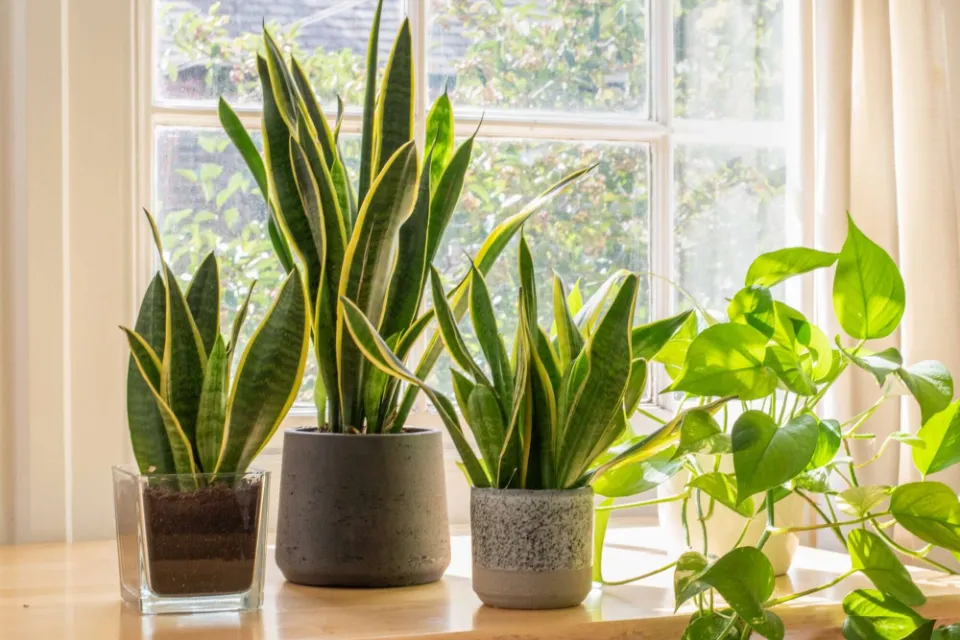
Water Needs Depend on Growing Conditions
Although snake plants are typically drought-tolerant, each plant will require a different amount of water depending on its growing environment. The amount of water a snake plant needs can vary depending on the amount of light, temperature, humidity, soil type, and type of pot it is planted in.
Light
The amount of light a snake plant gets is the most important factor influencing how often it will need to be watered. Snake plants can thrive in a range of lighting conditions, from bright light to low light, but their watering needs will need to be modified depending on the amount of light they are receiving. Plants grown in high levels of light will require more frequent watering, whereas those grown in low levels of light won’t require as much. This means that if you have multiple snake plants growing in various rooms of your house, you might need to water one of them more frequently than the other. This is totally normal!
Temperature and Humidity
Although growers should be aware of the effects that various temperatures and humidity levels will have on their plants’ watering requirements, snake plants thrive in a wide range of temperature and humidity conditions. Generally speaking, a plant grown in a warmer environment will need more water than a plant grown in a colder environment, and a plant grown in a high humidity environment will need less water than a plant grown in a dry environment. Thus, a snake plant grown in hot, dry conditions will require a lot more water than a plant grown in cold, humid conditions, and vice versa.
Soil Type
Ideally, snake plants should be planted in sandy, well-draining soil. This aids in keeping extra moisture away from their roots after each watering. They won’t require as much watering, though, if they are planted in less well-draining soil, as opposed to more well-draining soil.
Potting Container
Believe it or not, even the type of pot that a snake plant grows in can affect how often it needs to be watered. For example, terracotta pots absorb moisture from the soil which dries out the soil faster than a plastic pot. Likewise, if the pot has drainage holes—which it should always have!) excess water will drain from the drainage holes during each watering resulting in drier soil whereas pots without drainage holes will hold that excess water in the soil for longer. Make sure you understand the type of pot your snake plant is in and how that may impact its growing circumstances!
Read about
How Long Can Snake Plants Go Without Water?
Snake plants are well known for their low maintenance requirements, toughness, and ability to withstand neglect. They have a natural tolerance for dry weather because they are from Africa and South Asia.
They store water in their plump leaves, and their thick leaf cuticles reduce water loss. Because of this, they have unique photosynthesis and can generate energy to make their food without using water. They may prosper despite low water demand for the above reasons.
They are capable of going without water for a few months, particularly in the winter. You may be doing more harm to them by overwatering than by leaving them alone, you are correct. Having been there and done that, you can put your trust in me.
So put that sprinkler down and ease up on the watering. We ought to be safe and dry. Before bringing out the watering can, check the soil to see if it needs to be watered.
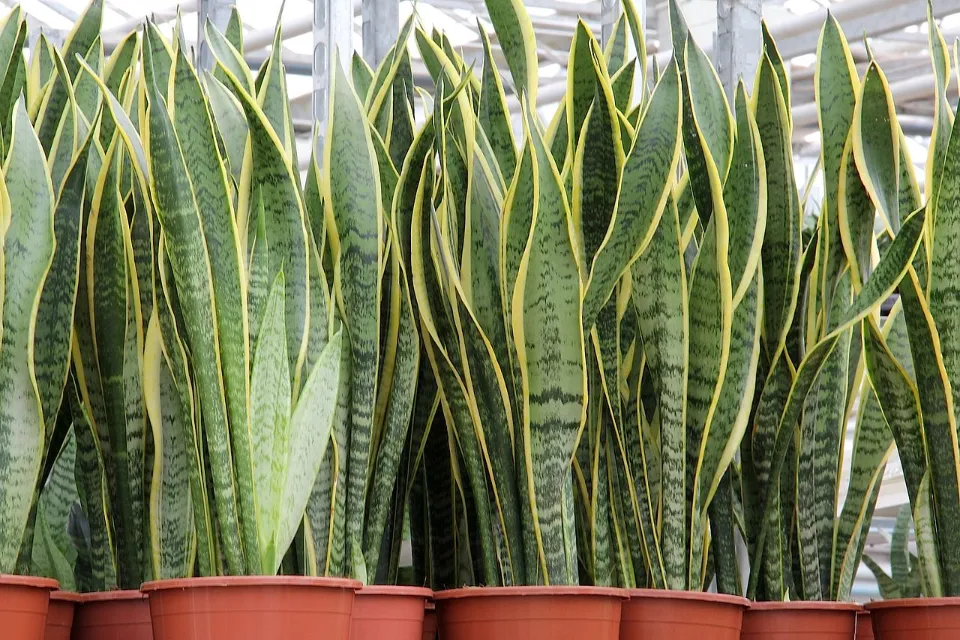
FAQs
Does Snake Plant Need Sunlight?
These tough plants thrive in any light level, from low to high. Brighter light usually promotes faster growth, but strong direct sunlight can burn leaves, especially when plants are outdoors. About 10 feet away from a west or south window is the ideal distance indoors.
How Do I Know If My Snake Plant is Dehydrated?
If your Snake Plant goes too long without water, its leaves will start to wrinkle, curl, and droop. They may turn crispy and brown or fade to yellow if submerged for an extended period of time or repeatedly. To prevent it from reaching this point, try to check the soil frequently!
How Long Can Snake Plant Go Without Water?
Sansevierias, also referred to as snake plants or mother-in-law’s tongues, are quite the opposite of some plants, which are relatively high-maintenance and bordering on dramatic (cough, cough: the fiddle-leaf fig). In fact, these trusty greens are so resilient they can go up to two weeks without water.
How Do I Know If My Snake Plant is Happy?
Look for dark green leaves to make sure your sansevieria is healthy. Snake plant health and nutrition are indicated by the plant’s dark leaves. Leaves that have a yellowish tinge on the outer edge of the leaves or leaves that are pale and floppy could indicate that the plant is dying.
Can a Snake Plant Live in a Room With No Light?
Snake plants are happiest in partial sunlight, but they’ll do just fine in a darker corner of the room, too.
Summary: How Often Should You Water a Snake Plant?
You can water your snake plant every 2 to 3 days, especially during the summer days when they consume more water. Spread out the watering schedule every 2-4 weeks if, however, they are indoors and receiving enough light.
Your snake plant needs to be watered correctly for it to grow and be healthy. Although watering your snake plant is not necessary very frequently, it is best to check the moisture levels at least once a week to make sure it is not either over or underhydrated.



